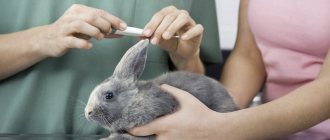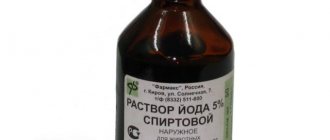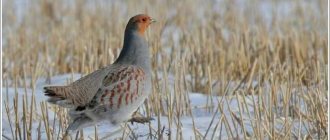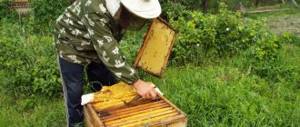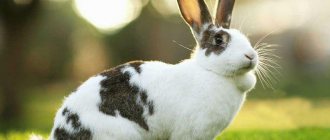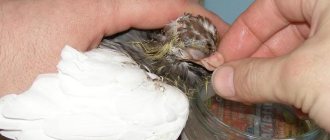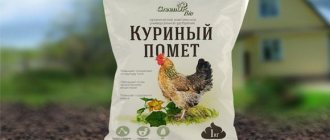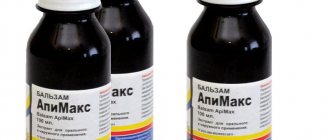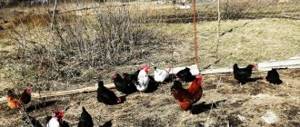1 643
no comments yet
0
Author:
Sadchikov Nikolai Alekseevich.
Reading time: 3 minutes
When periodically examining a bird, you can detect such an unpleasant phenomenon as growths on the paws. Neoplasms cause discomfort to chickens. Chickens stand in one place for a long time, bend their sore paws, clench and unclench their fingers, eat poorly, and constantly peck at infected areas.
In laying hens, productivity decreases or stops completely, and broilers stop gaining weight.
The symptom appears in the following diseases.
Knemidocoptic mange (calcareous foot, scabies)
The cause of the growths is the scabies mite of the genus Knemidocopthesis.
Symptoms:
- gray color of scales and their thickening;
- growths on and between the fingers;
- cracks with bloody or purulent discharge;
- death of fingers;
- itching
The disease is non-lethal for poultry.
At an early stage, the disease cannot be detected. The disease is infectious and spreads with lightning speed.
Knemidocoptosis
Drugs for treatment: ectomin 1% solution, butox, trichlorometaphos 4%, ASD-3, frontline, acarin gel.
Read
Arthritis and tendovaginitis
Arthritis is an inflammation of the synovial bursae of the paw joints and surrounding tissues. Broiler chickens are more often susceptible.
Tenosynovitis is inflammation of the tendons. Common in older chickens.
They are considered diseases of dirty feet. Polluted and wet bedding causes feces and dirt to stick to chickens' feet. Through wounds, viruses and bacteria enter the ligaments and joints, affecting them.
Due to inflammation in the joints, chickens experience severe pain when moving and sitting on the roost. The disease is aggravated by increased crowding of birds and weakened immunity due to poor quality nutrition.
General symptoms of pathologies:
- the bird gets up heavily and reluctantly;
- limps when moving, often on both legs;
- growths on the paws;
- joints are hot to the touch, enlarged.
Antiviral drugs are used in treatment: sulfadimethoxine, benzylpenicillin, ampicillin. With food or injections, 1 time per day, for 5 days.
Chickens are given immunomodulators to increase the body's resistance.
Gout (uric acid diathesis)
Symptoms:
- the bird is inactive;
- curvature of the hock joints, phalanges of the fingers;
- thickening of joints;
- the affected skin becomes gray with a white tint;
- the inflamed areas swell and crack, a white chalky mass flows out;
- increase in local temperature.
- Gout
- Drugs for treatment: bicarbonate salt 2% solution, Novatophan 3% solution, methenamine 0.25% solution.
- At the last stage, the disease is fatal to birds.
A chicken's leg is swollen
Problems with chicken feet are a common phenomenon that poultry farmers periodically encounter. To provide your pets with the necessary help, it is necessary to determine the cause of the pathology.
Ignoring the disease leads to a decrease in poultry productivity and death, which is a material loss for the poultry farmer. Therefore, you need to know what to do if a chicken’s foot is swollen.
Why do chickens start limping?
Chickens usually begin to limp due to leg diseases and injuries. Lameness not only causes gait disturbances, but often causes a chicken to stop walking altogether.
Errors in maintenance, feeding, and congenital defects can provoke a violation. Some pathologies are infectious.
Chicken keepers who keep poultry according to the rules usually encounter paw problems only if their pets are injured.
Chickens usually begin to limp due to leg diseases and injuries.
Paw injuries are a common occurrence. Usually there is a bruise and a breakdown of the skin. Dislocations and fractures are less common.
For chickens weighing more than 3 kg, crates rather than perches are recommended for sleeping.
Major foot diseases
There are several diseases that cause lameness and swelling of the paws. A poultry farmer can identify these diseases independently without a veterinarian.
Chickens of different ages and levels of productivity are prone to paw lesions. Heavy birds (broilers, meat chickens) are especially susceptible to pathology.
Knemidocoptic mange (calcareous foot in chickens)
The more common name for the disease is scabies or “lime foot.” The causative agent of the pathology is the scabies mite. The parasite gnaws out passages in the thickness of the skin of that part of the limb where there are no feathers.
Knemidocoptosis
The tick feeds on interstitial secretions. While actively reproducing, the parasite lays eggs in the skin. The incubation period of the pathology is long, infection appears after the age of 6 months.
The paws of a sick bird are covered with hard growths that have a bumpy surface. The scales protrude.
As the pathology progresses, the stratum corneum is completely covered with gray crusts, which, when ruptured, form cracks, from which ichor is abundantly released. The paw joints become inflamed. The fingers gradually atrophy and die.
Treatment is effective at an early stage of the disease. Effective remedies are tar baths, treating paws with hydrogen peroxide followed by applying a bandage with Vishnevsky ointment.
Arthritis and tendovaginitis
Inflammatory pathologies that cause inflammation of muscle tendons (tenosynovitis) and joint capsules (arthritis).
The impetus for their development is usually given by primary injuries to the paws, due to which pathogenic microorganisms penetrate into the tissue, primarily mycoplasma, staphylococcus, and salmonella.
The main symptoms of the pathologies are similar.
They appear like this:
- lameness;
- unsteadiness of gait;
- paws feel hot;
- joint deformation and swelling;
- formation of tumors on the paws (with tendovaginitis).
Treatment is with antibiotics. The drug is administered intramuscularly and also added to food. Ampicillin is the most effective.
Curly fingers
A pathology found exclusively in chickens. Caused by a lack of vitamin B2. The disease provokes paralysis of the fingers, disrupting the overall development process of chickens.
Treatment is carried out only at an early stage of the pathology. To restore the condition of the livestock, the diet is revised, eliminating vitamin deficiency. The advanced form of the disease cannot be cured.
The appearance of curly fingers can also be caused by poor quality incubation material. However, a hereditary congenital disorder cannot be treated.
Curly fingers
It is almost impossible to bring chickens with such a defect to slaughter weight. Hatching eggs should not be taken from hens suffering from curly toes.
Other causes of lameness and leg weakness in chickens
Problems with paws in chickens can also arise for a number of other reasons, which are less common, but also cause many problems for the poultry farmer and reduce productivity.
Curvature of fingers in chickens
Curvature of the fingers in chickens is a pathology that is practically untreatable and occurs in chickens in the first week after hatching. The chicks begin to walk on the side of their paw or on their tiptoes.
The disease occurs due to a hereditary predisposition, if an egg is taken for incubation from a sick bird or when young animals are poorly kept on a metal mesh floor, as well as at low temperatures.
Plantar pododermatitis (corns, swellings, injuries)
Symptoms:
- there are hard growths in the form of calluses on the soles of the paws;
- cracks with ichor discharge;
- upon palpation, a hard rod is felt inside the paw pad;
- chickens are inactive, shifting from foot to foot;
- decreased appetite.
- Plantar pododermatitis
- Drugs for treatment: antibiotics (ampicillin), trivitamin, tetracycline ointment, synthomycin ointment, vitamin A, fish oil, surgical intervention if necessary.
- The disease is non-fatal for birds.
Useful video about foot diseases in chickens
Like the author!13
- Even more interesting:
- How to deal with fleas and lice in chickens
- Methods for effective control of worms in chickens
- What to do if the ducklings start falling on their feet
Discussion: 2 comments
- Elvira:
12/15/2018 at 06:32Hello. The chicken has bumps on its legs and it won’t get up, please tell me what to do
Answer
- Tehieva Aminat:
03/25/2019 at 20:34
Hello, the chicken's paws are swollen like balls, but she is not limping, she eats normally, and there is also swelling under the comb. Are these ticks?
Answer
What to do with a fallen bird
In order to timely detect sick chicken coop inhabitants, it is necessary to conduct a daily inspection of the livestock. Signs of unhealthy legs in chickens include symptoms such as:
- lameness;
- falling over on one side;
- inability to stand up;
- refusal of food and water;
- drooping wings;
- curvature of fingers;
- inflamed and hot skin of the paws;
- signs of bleeding of the lower extremities;
- swelling in the area of the joints of the legs.
Sick birds should be placed in a separate box (pen), or better yet, in a separate room. This is especially true in cases where, along with leg weakness, there are signs of an infectious lesion in the form of, for example, feces of abnormal color and consistency, as well as mucous discharge from the eyes, beak and cloaca.
The next step is to contact a veterinarian. It is necessary to show him sick individuals so that the specialist:
- conducted an examination and made a diagnosis;
- prescribed treatment;
- gave recommendations on the maintenance of the remaining livestock.
In the absence of veterinary education and special skills, a poultry farmer should not independently engage in diagnosis and treatment, because many diseases have similar symptoms, although the therapy is different.
Growths on the legs
If the bird's legs are covered with growths, the limbs are deformed, the chickens experience exhaustion and weakness, the mobility of individuals is lost, as a rule, they taste gout. Chickens get sick if they are not fed correctly, which leads to metabolic disorders. Uric acid in the form of salt is deposited in muscle and joint tissues. The kidneys, liver and intestines suffer.
In case of gout, chickens are given less feed, whole grains are poured into feeders, and a balanced menu is gradually selected. The disease is recognized by the twisted legs of the suffering individuals; usually active young animals, when sick, move little, it is difficult for the bird to jump onto a perch, and if the bird’s legs have failed.
If the skin on the bird’s legs is inflamed, the legs have crayfish, cracks or cuts, the individual limps, presses the legs to the body, the legs are enlarged and when palpated, their temperature is felt, they are hot, the symptoms indicate inflammation and pododermatitis.
Staphylococci in poultry lead to osteoarthritis. A bird becomes infected by drinking water, eating food with bacteria, or otherwise through infected carriers. If the disease is advanced and has not been treated for a long time, the bird’s legs become paralyzed. The disease is recognized by the reluctance of chickens to eat, upset stomach and intestines, tenosynovitis, and severe damage to the joints.
The disease knemidocoptic mange, or calcareous foot, is recognized as infectious; scabies mites are found on the legs of chickens, and this is the causative agent. Even humans can become infected with knemidocoptic mange. The infection spreads through bedding, feeders, drinkers and other poultry house equipment. And growths appear on the chickens’ legs, scales fall off all the time, the chickens’ legs itch, which is why the sick try to peck them off.
In order not to bring domestic birds to a critical condition, you should treat them carefully, inspect them regularly, and also promptly clean, disinfect and ventilate the room with the bird.
https://youtube.com/watch?v=xsWL53eu7AY
Prevention
To prevent the development of namins, it is necessary to comply with the conditions of keeping the birds, regularly wash the cage, feed them with food containing sufficient amounts of vitamins and minerals, and ensure physical activity.
Poultry farming, in particular, chicken breeding, is a profitable enterprise, with its intermediate and final product (eggs, meat, down and feathers). Investments in production pay off in the shortest possible time. The main problem of breeders is the poultry’s susceptibility to various infectious and non-infectious diseases, which, at best, reduce farm productivity, negatively affecting egg production and weight gain; at worst, they result in the death of the entire livestock.
Leg diseases in chickens, which often serve as a reason for forced premature slaughter, should be placed in a separate category. This applies to broilers, meat poultry and laying hens. Violation of the normal functions of the musculoskeletal system certainly leads to weight loss, and in case of complications it becomes the cause of death of laying hens and broiler birds.
- IMPORTANT TO KNOW! Do not cut “fungal” nails! Nail fungus is treated like this: treat your nails with regular...
>>
Treatment of the disease
To cure naminitis, you need to:
- replace the perches (there should be at least two of them) with wooden ones (preferably with an uneven surface that helps activate blood circulation) with an appropriate diameter;
- keep the perches clean by washing them weekly;
- remove sand from the pallet and replace it with paper;
- let your pet out of the cage for walks more often, avoiding traumatic situations;
- include greens, vegetables and fruits rich in retinol in your diet.
At the first and second stages, namins are easily treated: they are treated with chlorhexidine or miramistin three times a day, and then with levomekol ointment. In case of swelling, additional hyoxyzone ointment is applied.
For old corns (but only if the skin is not broken), before applying ointments, make soda baths (dissolve 7-8 grams of soda in a glass of warm water). The birds' paws are placed in them for about 10 minutes. The procedure is repeated more often. Baths can be replaced with compresses. Baking soda will soften dead tissue and remove pus.
You should not self-medicate. To avoid the death of your pet, you should contact a veterinarian. He will conduct tests, based on which he will establish the correct diagnosis and select the optimal treatment. Timely provision of medical care significantly increases the chances of a successful recovery.
In addition, at home, inflammation of the joints, hyperkeratosis, fungal infections, and mite infestation can be confused with pododermatitis.

